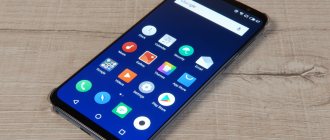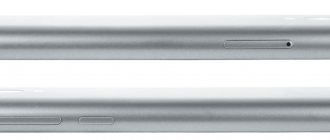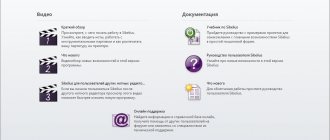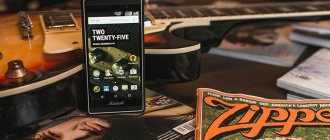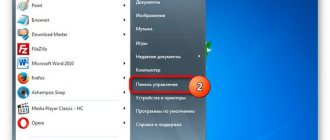Features Overview
- Dimensions: 153 x 75.4 x 7.7 mm.
- Weight: 158 gr.
- Color: White/Pink/Black/Golden Pink.
- Material: glass and metal.
- OS: Android 6.0 with Flyme 5.2.4.
- Universal slot: SIM + SIM or SIM + microSD.
- Supports microSD up to 128 GB.
- CPU: MediaTek MT6755 Helio P10 8-core.
- Data transmission: Wi-Fi 802.11 a/b/g/n, Bluetooth 4.0, GPS A-GPS, GLONASS.
- Graphics chip: Mali-T860MP2.
- Internal memory Meizu u20 16 gb / 32 gb.
- RAM: 2 GB / 3 GB.
Meizu u20 communication characteristics:
- 2G GSM 850 / 900 / 1800 / 1900; CDMA 800.
- 3G TD-SCDMA 1880-1920 / 2010-2025 MHz and UMTS 900 / 1900 / 2100 MHz.
- 4G LTE cat 4, 1800, 2600 MHz; LTE-TDD 1900 / 2300 / 2500 / 2600 MHz.
Meizu U20 - review of an image smartphone
I have always liked smartphones from Meizu, primarily for their design. But for a long time, the appearance of their models remained virtually unchanged and, frankly speaking, became boring to many. The company took into account the wishes of users and released two new models U10 and U20. The result exceeded all expectations; the design of the smartphone was very stylish, one might even say premium, and at the same time retained the main features inherent in Meizu.
But technically it turned out to be an almost complete copy of the already well-known Meizu M3 Note. Whether this is good or bad, I don’t know, but I’m only sure that we are often over-performing, forcing us to buy more and more powerful smartphones. But in practice, many do not use even half of the potential. Even that category of users who really need powerful hardware (for example, gamers) encounter another problem - throttling and excessive heating of the device under load. In general, today we will analyze in detail all the features and functions of the Meizu U20, and let’s start traditionally...
Detailed technical specifications
- Processor: MediaTek MT6755 Helio P10, 8 cores (4 powerful Cortex-A53 1.8GHz cores + 4 economical Cortex-A53 1.0GHz cores)
- Graphics: Mali T860 MP2
- Memory: 2Gb RAM and 16Gb built-in - in the standard version, 3Gb RAM and 32Gb built-in - in the top version. Supports micro SD memory cards up to 128Gb
- Screen: 5.5 inches with a resolution of 1920 x 1080 (Full HD), GFF (full lamination)
- Camera: Main - 13 MP, F/2.2 aperture, 5-element lens, phase detection autofocus. Front - 5 MP, 4-element lens, F/2.0 aperture. Video - maximum resolution Full HD 1920 x 1080, 30 frames per second.
- Communication: 2 SIM cards (Nano+Nano) - GSM (850/900/1800/1900), 3G (900/1900/2100), LTE (Band1,3,7,38,39,40,41)
- Wireless interfaces: Dual-band Wi-Fi (5/2.4 GHz) - 802.11 a/b/g/n, Bluetooth 4.0, Navigation (GPS, A-GPS, GLONASS)
- Sensors: Fingerprint scanner – mTouch 2.1, Hall sensor, gravity sensor, infrared proximity sensor, gyroscope, light sensor, digital compass.
- Battery: Built-in, 3260 mAh
- Operating system: Flyme 5.2.4 based on Android 6.0
- Dimensions: 153 mm x 75.4 mm x 7.7 mm
- Weight: 158 g
Prices:
Meizu U20 32Gb
Meizu U20 16Gb
Like Xiaomi, Meizu is trying to imitate Apple products in many ways. Snow-white box in a minimalist style. The cardboard is very thick and the contents are reliably protected.
Sticker with technical characteristics in the manufacturer’s native language. The only thing that can be understood is that we have a junior version with 16Gb of built-in memory. In addition, there is information about IMEI and serial number.
The package includes the minimum necessary for work: an envelope with documentation, a key for removing the SIM card tray, a usb - micro usb cable and a charger. The seller put the adapter for the Euro plug separately; there is simply no room for it in the box.
Compact size charger.
It is capable of delivering a maximum current of 2A at 5V, load testing confirmed this. But the smartphone itself turned out to be more modest when charging; the maximum charge current does not exceed 1.3A at a voltage of 5.2V. Power - 6.78W. Just in case, I tried other charges - the same result. As a result, we get a leisurely charge: from 0 to 100% in 3 hours 19 minutes.
And of course, the handsome guy himself is Meizu U20. I liked the design so much that when, after testing (about 2 weeks), I returned to my main smartphone, my heart was filled with melancholy. In general, I like smartphones like this that are flat and have no curves. Meizu offers two classic colors - white and black. And each has its own advantages. The black one looks really cool, even the metal frame is painted black. And the already small frames around the screen are practically invisible in this design.
However, this is not my option, because I can’t stand a “tattled” smartphone, and this point is especially noticeable on a black gloss. Therefore, I generally prefer light colors when choosing a smartphone. But these are rather my “cockroaches”; in any color the U20 looks amazing.
Looking at the front part, we immediately understand that this is a Meizu representative. The designers barely touched on it and did the right thing - it’s hard to improve something here, but it’s easy to ruin it.
Meizu is of the opinion that the most convenient location for the fingerprint scanner is on the front. It is built into a button that is both touch and mechanical. For example, to unlock a smartphone you need to press it, and to go back you just need to touch it. This was done on purpose, because in general, a touch is enough to read a finger. This is clearly visible if you press the usual lock button, and when the screen is activated, simply touch the sensor to finally enter the smartphone. Visually, the button has not changed. mTouch 2.1 technology is used, which is based on a capacitive sensor. The reading speed is 0.2 seconds, and the recognition angle is 360 degrees. By scanning your finger once, you can unlock your smartphone from any angle. The recognition accuracy is high, the defect rate is extremely low, but for the sake of fairness, I note that the sensor in the latest Xiaomi devices, for example Redmi Note 4, is more accurate and fingerprint recognition is better there. Perhaps this is due to the shape of the sensor itself; out of habit, the finger does not always land exactly on the oval button.
At the top, everything is standard - front camera, proximity and light level sensors, earpiece. The quality of the speaker is good, the voice sounds natural.
Now let’s turn the smartphone over. I can’t even believe that we still have Meizu in front of us. I always really liked the design of the iPhone 4. My first purchase in China, about 5 years ago, was some kind of no-name clone of the fourth iPhone on Android 2.1. In the next model, Apple redesigned the design and all manufacturers began to diligently copy it, making smartphones more rounded. Samsung has been producing some identical “remnants” all its life. And now Meizu releases its U10 and U20, very similar to that same design. They used glass on the back, which resulted in a kind of sandwich made of a metal frame and glass on both sides, which looks stylish. One of the disadvantages of this design is that the smartphone is quite slippery.
The camera is located in the upper left corner. It protrudes above the body by a fraction of a millimeter, but the lens glass is protected by a metal frame. Next to it is a dual LED flash.
The frame is made of metal, in white it is not painted. Along the perimeter you can see a decorative chamfer, which makes the device visually more attractive and thinner.
The top edge is clean, only an additional microphone for noise reduction.
All connectors on the bottom edge:
- micro usb for charging and connecting to a PC, the smartphone also supports the OTG function.
- 3.5 jack for connecting headphones.
The main microphone and audio speaker are also located here. The speaker is of medium volume, the ringtone sounds clear, without wheezing even at maximum volume.
The tray with SIM cards on the left side opens. The smartphone supports two SIM cards, both cards are Nano format. If desired, you can replace one of them with a memory card, supported capacity up to 128 GB. I don’t consider the hybrid tray to be a disadvantage, because unfortunately, this solution has already become standard for many manufacturers.
Controls in the form of an adjacent volume button and a lock button on the right side. The device is assembled with very high quality; if the case is shaken or squeezed, it will not make a sound.
Screen
Made using full lamination technology, it transmits the image as clearly as possible and without color distortion. The contrast is 1000 to 1, and the detail is 400 pixels per inch. Black color looks very good on the screen - not gray, like on cheap screens, but deep black. Maximum brightness allows you to comfortably use your smartphone during the day outdoors in direct sunlight.
The screen glass is made using 2.5D technology - with rounded edges. To top it all off, a high-quality oleophobic coating is applied to the glass. The finger glides perfectly over the surface, leaving no traces of dirt. Multi-touch is supported for 5 simultaneous touches.
The absence of highlights is clearly visible on a black background. The viewing angles correspond to the IPS matrix; when the tilt angle changes, the brightness drops slightly, but there is no distortion or inversion even diagonally. In general, the appearance, quality of materials and excellent display are the model’s strongest points.
Operating system. Firmware. Interfaces.
The smartphone came fully Russified with international firmware. It works, as they say, out of the box. All Meizu fans are well aware of their proprietary Flyme shell; version 5.2.4.0 is installed here, which is based on the Android 6.0 operating system. There are proprietary applications, such as useful tools, which include: ruler, level, compass, etc. But I especially liked the flashlight with adjustable brightness level - by switching the slider, you choose how bright it will shine.
Own fonts, styles, icons - everything has been redesigned to the smallest detail. In some ways, Flyme is similar to MIUI, or vice versa.
In any case, everyone will find a design to their liking. In the personalization center, a huge number of free themes and wallpapers are available that can easily transform your interior design into either IOS, MIUI, or Windows. There are also a huge number of exclusive themes with completely redrawn icons, badges, fonts, etc.
Security Center has many useful utilities:
- cleaning up unnecessary stuff - built-in cleaner that will help remove excess junk from your phone,
- memory accelerator - optimizes memory, kills unnecessary processes,
- traffic management - to control consumed traffic on the mobile Internet with the ability to limit it,
- Spam blocking - from unwanted calls and messages, also known as a blacklist,
- Power management - control charge consumption, configure different modes of use,
- Antivirus. I wonder if anyone has encountered viruses on Android? I haven't yet)
There is a simplified mode that can be useful for children and the elderly - large icons and text, nothing superfluous.
In the screen settings you can select the color temperature; the default is neutral.
There are smart gestures that work when the screen is off. Double tap, swipes and graphic symbols - can be configured for a specific action or application launch. In addition, there is an additional Smart Touch panel, which, when activated, is always on the screen in the form of a small translucent ball; by performing various actions on it, we also give commands to the smartphone in this way.
Performance. Synthetic tests.
Meizu used in its new product the economical Helio P10 processor, which has been on the mobile device market for quite a long time and has managed to prove itself well. Moreover, technically the U20 is an almost complete clone of the Meizu M3 Note. This decision is completely justified, because there is no need to reinvent the wheel, but you can use ready-made and well-established developments. Yes, in terms of performance it is not super top, but the power of an 8-core processor is enough for absolutely any task. Even powerful and modern games run without lags, only on some the settings need to be reduced from maximum to medium. I’m generally silent about the operation of the shell and interfaces - the smartphone is very fast, everything just flies. Let's look at the information from CPU-Z
Next, we’ll run an Antutu test and talk about throttling. Absolutely all modern smartphones are susceptible to it to one degree or another. If throttling is disabled, the device boils in a matter of minutes, often even displaying a message about overheating, after which it is naturally impossible to use it. If the throttling is very large, then when the frequencies are reduced, the performance drops significantly and the meaning of all 100,500 powerful cores is lost. Therefore, you need to look for a middle ground. Often throttling does not even depend on the processor, but on the drivers and firmware version, so each smartphone needs to be checked individually. If you are interested in this topic, then in all subsequent reviews I will make the throttling test mandatory. In the meantime, let's return to Meizu U20. Having carried out the test on a cold smartphone, I got the result - 48225 . For the second test, I turned on a guided tour in the Epic Citadel application, loading the processor and graphics. I left the smartphone in this form for 30 minutes, after which I immediately ran the Antutu test - 43982 . The performance loss according to the antutu benchmark was 4243 points or 8.8%, which is almost an ideal result. For comparison, Vernee Apollo Lite on Helio X20 lost more than 30% in performance.
In Geekbench 4, the result is 737 points in single-core mode and 2521 when all cores are used.
Graphics capabilities are shown well by the Epic Citadel test: in high quality mode - 58.4 frames per second, ultra high quality - 42.4. The smartphone runs any, even the most modern and demanding games without any problems. In some, for a comfortable game you need to change the graphics settings to medium. WOT is fully playable on medium settings.
To complete the picture, results from Real Benchmark
An important role in real performance, that is, how quickly a smartphone will work, open folders, launch applications, load Internet pages - plays the speed of RAM and built-in memory. Which configuration to choose 2/16 or 3/32 is up to you - on the one hand, there is never too much RAM, on the other hand, for simple work - calls and the Internet - 2Gb is enough. In any case, high-quality and fast memory awaits you. Reading speed of the built-in memory is 180 MB/s, writing speed is 85 MB/s. Androbench generally gave a huge read speed - 250 MB/s, write speed - 75 MB/s. RAM can boast speeds of more than 6000 MB/s.
One of the battery testing points for me is always video playback. When I connected my flash drive via OTG to start some movie and see how long it could continuously play it, I was very surprised. The smartphone opened and played almost all the video files on the flash drive without any problems, and there, in addition to the film, I had a small selection for testing TV boxes for omnivorousness. Putting aside battery testing, I installed Video tester. The result was pleasantly surprising - 877 points, 26 test videos with full support and 4 with partial support. Even TV boxes specially designed for video do not always produce such results. The smartphone was able to cope with all possible video formats. Moreover, I didn’t even install mx player and additional codecs, only the standard player.
It couldn't play only 2K and 4K video, but the smartphone doesn't need that.
Connection. Internet. Navigation.
Everything here is predictable, no surprises. The signal level and reception quality are at the level of other smartphones. The Internet can work on both 3G and 4G - there is support for LTE (Band 1,Band 3,Band 7,Band 38,Band 39,Band 40,Band 41). WiFi supports operation in two bands - 5/2.4 GHz, the reception level is good. The first screenshot is through the wall from the router, the next one is 3 walls. The smartphone continues to receive the signal, although the speed drops significantly.
Navigation is supported by GPS, AGPS and GLONASS. The time of the first fixation was 5 seconds, on average it finds 12 - 16 satellites, in an active connection - 13, the accuracy is 3 meters. In normal weather it works flawlessly. In bad weather, I noticed a couple of times that it sometimes loses satellites for a couple of seconds, it feels like the antenna is not sensitive enough. It is located in the upper right corner, under the plastic connection. Even if you close it with your finger, you can immediately see how reception is deteriorating.
Camera.
I have already spoken about the omnivorousness of a smartphone in video playback. Now about the camera. Using third-party software, I was able to find out that the main camera sensor from Omnivision is ov13853. The same sensor is used in Meizu M3 Note and Alcatel Flash Plus 2. The camera is equipped with fast phase detection autofocus, has an f/2.2 aperture and takes good photos in sufficient lighting conditions. Overall the camera is quite mediocre, but suitable for everyday use as long as you don't demand too much from it. Below are examples of photographs that can be downloaded in their original size (click on the photo):
Daytime shots in sunny weather conditions
Object shooting
Photos taken under dense cloud conditions.
Artificial lighting
Night shot
5 megapixel front camera with OmniVision sensor - OV5670, 4-element lens, f/2.0 aperture. The main task is video calls, it copes with it perfectly. But if you want, you can even take selfies with it; the photos come out surprisingly good, but the resolution will not be too high - 2560x1920.
But the video is weak. Maximum resolution - Full HD 1920x1080, 30 frames per second. But the detailing is not the best and even in good lighting it is noticeable how sometimes the camera slows down.
Battery. Autonomy.
The capacity of the built-in battery is 3260 mAh (average value), when turned off, 3206 mAh is filled into a completely discharged smartphone through the tester.
In moderate use mode, the smartphone can easily withstand 2 days; under heavy loads, the smartphone can withstand a working day with a total screen operating time of at least 5 - 6 hours. Next are the tests. With a high load on the processor and graphics core (guide mode in Epic Citadel) at maximum screen brightness and full speaker volume, the smartphone worked for 4 hours 28 minutes.
Video from the built-in memory was played for about 14 hours at an average brightness level, and 9 hours at maximum brightness. In the battery test - Geekbench 3, the smartphone scored 5555 points, the test lasted 9 hours 15 minutes.
I ran the battery test in Antutu Battery Tester twice. The first time in the automatic brightness adjustment mode at the average value - 9329 points, the second time at maximum brightness - 6441 points. The test at maximum brightness lasted almost 4 hours, more than a third of the charge was consumed by the screen.
So, let's summarize. Meizu U20 is not strong in synthetic tests; in terms of performance, it is rather a simple average. In my opinion, the device was created for pragmatic people who, when choosing, are guided by visual and tactile sensations, that is, what can be seen and touched. Extraordinarily beautiful design, high-quality materials, excellent display. This is the strength of Meizu U20. Among the shortcomings, I can highlight the slippery body and the not very high-quality recording of the video camera.
Video version of the review.
You can buy Meizu U20 on Ali, the current price can be found here.
Ergonomics and external style
The body is made of 2.5D glass panels with a metal strip along the end. On the front side in the upper part there is an event indicator, light and proximity sensors. At the bottom below the display is the mTouch 2.1 navigation button, which has an integrated fingerprint sensor that can remember 5 different fingerprints. The scanning angle is 360°. Instantly responds to the owner's touch.
Due to the glossy glass panel on the back it is very similar to the iPhone 4. The camera, unlike other models, is located in the upper left corner and protrudes. In order not to scratch it, it is advisable to use an additional accessory in the form of a cover. There is an LED flash nearby. At the end on the right side are the power and lock keys. And on the left side there is a tray for a SIM card and memory card. At the bottom of the end there are headphone jacks and a USB connector, as well as an external speaker and the main microphone.
The original case looks stylish, but not practical. Your finger leaves imprints and streaks on the glass surface. It is worth noting the high-quality assembly, the panels fit tightly to each other, do not move anywhere, and do not creak. The gadget is comfortable to hold and easy to navigate with one finger.
On sale for citrus you can find a model in pink, black, white and pink gold colors. The smartphone comes with firmware in Russian.
Appearance and equipment
This smartphone is one of the few budget devices that have such an attractive and stylish design. Its ends are made of metal, and on the front and back there are two glass panels with 2.5D glass rounded at the edges, which makes the U20 look like a more expensive device than it actually is.
A minus immediately appears - the black case will collect a lot of fingerprints, so it’s better to take the white version. Also, the smartphone is quite wide - 75.4 mm, and therefore it will not be very convenient for users with small palms to use; it can slip in the hand due to the fact that it is glass, so we recommend that you turn the gadget in your hands before purchasing and make sure that it is comfortable specifically for you.
As for the arrangement of functional elements, everything is as usual: on the left is a hybrid tray for SIM and memory card, on the right are power and volume control buttons, at the bottom is a micro-USB connector and a headset jack.
Under the display there is a mechanical touch key with a built-in fingerprint recognizer (by the way, there are no complaints about its operation - it works quickly). There is also a good oleophobic coating that protects against fingerprints and Gorilla Glass protection.
Display
Screen 5.5″ with FullHD 1920 by 1080 pixels and a characteristic IPS matrix. This allows you to get the clearest picture from any angle. The secret to the absence of an air layer is lamination technology. The display delivers vibrant colors with a 1000:1 contrast ratio and decent calibration. In the settings, you can use the slider to adjust the tone of the image.
To protect your eyes, there is a blue light reduction mode. In this case, you can set the duration of the protection and the degree of reduction. The brightness level at maximum allows you to comfortably perform any task. In direct sunlight, screen readability decreases. The minimum brightness levels are weak and the image is too bright at night.
The protection of the gadget is provided by the top 2.5D curved Gorilla Glass 3 glass, thanks to which it is not afraid of scratches. Oleophobic protection prevents the appearance of fingerprints, but stains still remain.
Benchmark performance
The eight-core MediaTek Helio P10 processor is more than enough to handle everyday tasks. You can even play modern games. To play Modern Combat 5 or WOT, for example, you only need to lower the settings to medium.
During testing, Antutu scored 48,000 points. He coped well with multitasking and handled routine tasks easily and stably. Under high loads, the processor starts to heat up, but performance does not drop. Often, it is not the processor that is to blame for throttling, but the firmware version or driver.
In tests on Geekbench 4 with a load on one core it showed a result of 735 points. And with all cores running, the result was 2520 points. Graphics tested using Epic Citadel. On the test with the high mode the figure is 58 frames per second, and on the ultra-high mode it is 42 frames per second. And another test on Video tester showed that the smartphone easily plays all video formats on a standard player, for which it received 870 points.
The performance of a smartphone depends on the speed of the RAM and internal memory. The dual-channel LPDDR3 OP model is available with 2 GB or 3 GB. Owners of a smartphone with 3 gigabytes can simultaneously run more applications and switch between them without problems. For personal information, users have access to 16 GB in the basic version and, accordingly, 32 GB in the luxury version. If there is no need for a large amount of memory, then the second slot can be used for a SIM card.
Performance
The performance of the device is ensured by the 8-core MediaTek Helio P10 chipset, Mali-T860 video accelerator, 2 GB of RAM (there is a version with 3 GB of RAM) and 16 GB of storage (there is a modification with 32 GB). This set is enough for comfortable work with a smartphone: using social networks and instant messengers, making calls, reading news and other tasks. In the browser, with a large number of open tabs, you may notice insufficiently smooth scrolling, but this is not noticed in other applications.
As for toys, the device can handle everything without 3D graphics. If you run “heavy” games, fps drops and stuttering will be noticeable. It was unpleasantly surprising that even in Angry Birds 2 you can periodically notice slowdowns, although the game is not the most demanding. Afterwards the NFS: No Limit race was launched, and there were practically no slowdowns.
During long gaming sessions, the back of the device gets very hot. This is likely due to the fact that glass does not conduct heat as well as metal.
The results of testing Meizu U20 in benchmarks are at an average level by modern standards; the device just fell short of 50 thousand parrots in AnTuTu.
Front camera
The main camera is 13 megapixels with phase detection autofocus, f/2.2 aperture and dual-tone LED flash. Testing has shown that the matrix covers a wider color range than previous models.
The camera instantly takes detailed, rich photos with high clarity. Focus speed allows you to take pictures while the subject is moving. Burst shots in automatic mode come out quite good. Close-up and macro shots work best. To avoid stretching frames when shooting from a medium distance, you need to turn on additional lighting well.
In cloudy weather, the pictures are not as saturated, color rendition is reduced and details are somewhat lost. When shooting at night, the result leaves much to be desired. Video shooting is done in Full HD 1920×1080 30 frames per second. There is no automatic focusing, so it can only be done by tap.
Camera
The U20 gadget has a 13-megapixel camera with f/2.2 aperture with LED flash and phase detection autofocus. In good lighting conditions, the camera copes with its tasks with a bang, but in the evening you shouldn’t expect great results - the level of detail is significantly reduced, and color rendition is distorted. The phone also takes photos in HDR mode and allows you to set manual exposure settings.
The front camera, as usual, is 5 megapixels without autofocus, allowing you to take selfies of satisfactory quality.
Video shooting can be done in Full HD resolution at a frame rate of 30 fps without optical stabilization. To sum it up, the camera is not a huge advantage of this Meizu model.
Software
Flyme OS 5.2.4 is installed on Android 6.0 with additional functions: ruler, compass, level and flashlight with the ability to adjust the brightness level. The Android operating system code is well optimized for the needs of programs and applications. For decoration there is a huge selection of themes and wallpapers, simple or exclusive.
You can configure smart gestures (tap, swipe, symbols) for some action, which work when the display is off. Another interesting Smart Touch function, designed in the form of a small transparent ball on the screen. Using specified gestures, you can send commands to your smartphone.
The security section contains many necessary utilities:
- built-in cleaner that will clean the gadget of everything unnecessary;
- memory accelerator optimizes running processes by speeding up necessary ones and deleting unnecessary ones;
- traffic management controls mobile Internet consumption and can set restrictions;
- a spam blocker or blacklist allows the gadget owner to protect himself from unnecessary messages and calls;
- power control is responsible for the technical mode of power supply;
- Antivirus will protect your smartphone from virus attacks.
The characteristics of the firmware allow you to set a simplified operating mode that is suitable for children or the elderly. Only text and large icons will be shown. The manufacturer did not preinstall Google services or its applications. Device owners have the opportunity to install Google Play and the necessary services automatically during the initial settings.
Software platform
The smartphone runs Android 6.0 and the proprietary Flyme 5.2.4.0G shell. We received a device intended for the Chinese market, but the seller carefully prepared it for use in Ukraine, installed firmware with the appropriate localization and Google services.
As is the case with MIUI on Xiaomi smartphones, Flyme on Meizu makes these devices as different as possible from most others in terms of software. The Android version has minimal impact on functionality and user experience because these factors are determined by Flyme OS.
The shell has a simple and laconic design, which can be attributed to its advantages. The system management is very conveniently organized. Touching the mTouch key works as “Back”, pressing it as “Home”, and holding it locks the smartphone. To access the list of running applications, you need to swipe from the bottom edge of the display.
Advanced users may be annoyed by various little things. For example, the Google Now assistant is poorly integrated into the firmware, notifications may arrive with a delay, and the icons of most third-party applications look much worse than those of the built-in programs.
Sound quality
The multimedia speaker, like all budget models, has an average volume level. You can improve sound quality by listening to music using headphones. The built-in audio app has limited options for customization. Therefore, the solution for those who like to listen to music on their smartphone is to install an additional audio player.
On alarm clocks and calls, the signal sounds louder, but sharp. The lack of a dedicated audio chip affects the character of the sound. There are often no low ones, but the high ones, on the contrary, are clearly pronounced.
The speaker is loud enough and the sound performance is excellent. The noise-canceling microphone, which is located at the top of the gadget, does an excellent job.
Design and ergonomics
Meizu U20 is a smartphone whose back and front panels are covered with 2.5D glass rounded at the edges. Previously, the manufacturer had not used this material to cover the rear part, but here he decided to experiment. The device in a black case looks expensive and stylish, but at the same time it is quite strict - the design is minimalistic, there is nothing superfluous.
It is impossible not to say that visually the device resembles the iPhone 4S, although it is much larger in size. At the same time, the front panel is very similar to the OnePlus 3 with a similar Home button and screen size.
Below the screen is the proprietary mTouch 2.1 button, which has a built-in fingerprint scanner. Clicking on it takes the user to the desktop (“Home”), touching it performs the “Back” function.
Above the display there is a front camera, a proximity sensor and a speaker. The side frames of the device are quite thin, considering that we are talking about a budget device.
The rear panel has undergone certain changes - now the camera and flash are located not in the middle, but in the upper left corner. The manufacturer's logo is placed in the center, and trade marks are located below. The entire back panel is covered with 2.5D curved glass, which gives the smartphone a premium and stylish appearance.
The power and volume buttons find a place on the right side of the device - the location is more than familiar and convenient when operating the gadget with one hand.
On the bottom edge there are four holes for the main speaker, a 3.5 mm headphone jack, microUSB for charging, a microphone and an antenna strip.
The top edge includes two antenna strips and a microphone hole.
On the left side of the device there is a hybrid slot for nanoSIM cards and a microSD memory card, which is removed with a special paper clip.
As for ergonomics, it is unlikely that it will be convenient to operate this device with one hand: it is not difficult to reach the buttons on the right side and mTouch 2.1, but the upper part of the display is almost inaccessible. When you take Meizu U20 in your hand, you immediately get the feeling that the side edges are not smooth enough - they are not rounded, but smooth, which is why the smartphone can cause discomfort. This becomes especially noticeable when using the gadget for a long time.
In general, the assembly of the device is done at a decent level; the smartphone feels solid in the hand. However, there is a significant drawback - the volume and power buttons located on the right side are loose and make strange sounds. If you take the device and shake it a little, you will hear the characteristic sound of wobbly keys. In addition, this can be detected during daily use of the device.
Another drawback is that the device is soiled - it tends to collect fingerprints and greasy stains, especially on the back panel. Of course, the oleophobic coating allows you to quickly remove stains, but you don’t want to do this regularly.
Autonomous operation
Meizu U20 has a non-removable Li-Ion battery with a capacity of 3260 mAh. In order to make the mobile phone thinner, the manufacturer had to reduce the battery capacity, which led to an overall decrease in operating time. But Flyme OS provides advanced potential for flexible power consumption settings. You can select settings for hardware and software power consumption separately.
Testing the battery in operating mode showed that, thanks to the integrated system for regulating charge consumption, the smartphone did not turn off for 40 hours. Under intense loads, it held a charge for 11 hours, and in standby mode it did not turn off for 27 hours. When playing music and surfing the Internet, the battery lasted 4 hours. The video at medium brightness mode could be watched for 13 hours, and at maximum – 9 hours. For a smartphone with a display size of 5.5″ and a battery capacity of 3260 mAh, the result is not bad.
The compact charger produces a maximum current of 2A at 5V, which was confirmed by tests. But when charging the smartphone, the maximum charge was no higher than 1.3A at 5.2V. On other chargers the result was the same. Therefore, it will take 3 hours and 20 minutes for the battery to be fully charged from scratch.
Alternative options
The competitor may be the device of the same manufacturer M3 Note. It has a higher battery capacity and a metal body. But at the same time the shooting performance is lower. And not so attractive external design.
As an example, we can consider Xiaomi Redmi Note 4 and Xiaomi Redmi Note 3 Pro. Both smartphones have better performance and battery life compared to the Meizu u20. But Xiaomi phones are inferior in shooting quality. And the design of the meze looks more impressive.
conclusions
Meizu U20, the younger 16gb version of which is sold on Aliexpress for $139.99 via the link https://goo.gl/z8TsUc or for $179.96 on the trusted Gearbest https://goo.gl/Myh5NJ, turned out to be a rather controversial smartphone. As the review showed, it does not shine with performance, photo quality and battery life, but in its price category it is the only smartphone in a glass and metal body.
If you are choosing a mobile device based on image considerations, the U20 will be a good solution - the device looks really cool and expensive, and it also has an excellent display. The characteristics of the device allow it to satisfy all the needs of the average user; by purchasing U20 you will not have to think about replacing the phone for at least 1-2 years.
The main competitor of the U20 can be considered Meizu M5 Note (140 USD on Aliexpress) and Xiaomi Redmi Note 3 (140 USD there). We hope this review was useful to you, good luck in your choice!
Relevance of the model today
The start date for sales of Meizu u20 16gb and 32gb is 2020. A phone at a budget price with an excellent large diagonal display. Impeccable assembly of glass and golden metal, stylish design allow the smartphone to remain on the wave of demand. Even the 2 GB model copes well with everyday tasks. The camera's capabilities allow you to take well-detailed pictures. In terms of price/quality ratio, Meizu u20 will not lose its relevance in 2020.
Brief conclusion
For those who want to buy a cheap smartphone with good performance and excellent shooting quality, this version is the most advantageous option among similar gadgets. If you are not too demanding of game graphics, then at medium settings you can race and shoot from a tank. And a choice of color palettes to suit every taste: white, black, pink and rose gold. By giving preference to Meizu u20, you will receive a reliable device with stable performance in an original case.

